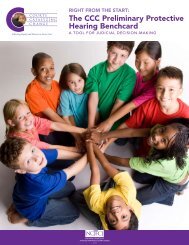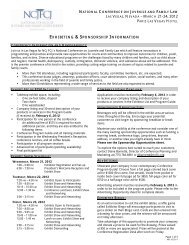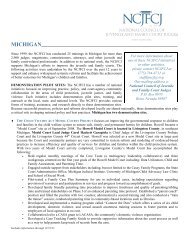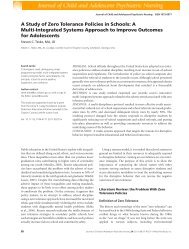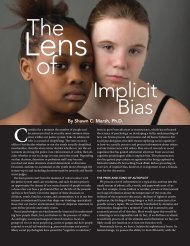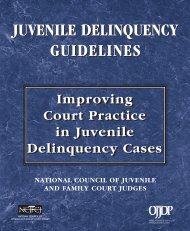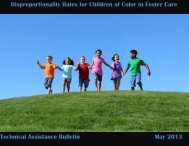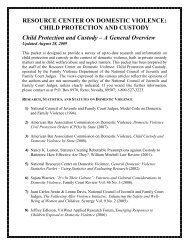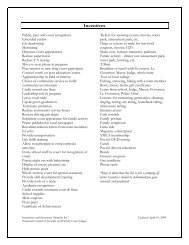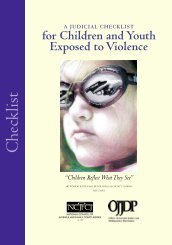EDUCATION UNDER ARREST: - Justice Policy Institute
EDUCATION UNDER ARREST: - Justice Policy Institute
EDUCATION UNDER ARREST: - Justice Policy Institute
- No tags were found...
Create successful ePaper yourself
Turn your PDF publications into a flip-book with our unique Google optimized e-Paper software.
<strong>EDUCATION</strong> <strong>UNDER</strong> <strong>ARREST</strong> 17PART VISCHOOL RESOURCE OFFICERSINTERFERE WITH <strong>EDUCATION</strong>School resource officers interfere with the responsibility of schools to educate allstudents in three ways. First, SROs directly send youth into the justice system,which carries with it a lifetime of negative repercussions and barriers to educationand employment. Second, in many school districts an arrest or referral to thejustice system also means suspension and expulsion from school.Suspensions and expulsions cut off studentsfrom the positive interactions of schools, alsosetting students up for a variety of negative lifeoutcomes. Third, SROs interfere with the overallopportunity for students to learn, in some casescreating the very sense of fear and violence thatthey are supposed to prevent. Causing studentsto miss school or otherwise become disengagedfrom school sets off a chain reaction of missedopportunity that leads to a “school to prisonpipeline” that ends in future justice involvement.Schools can effectively respond to misconduct oreven more serious offenses like theft withoutSROs. Through more effective policies andpractices, schools can avoid subjecting youth tothe negative effects of the justice system and thelost educational opportunities that go with it.Involving youth in the justicesystem undermines goals ofschoolsAs mentioned above, school resource officersand law enforcement officers in schools areassociated with increased arrests, especially forminor offenses; these arrests can lead todetention and confinement in juvenile justicefacilities. Studies have shown that such facilitiesare dangerous for youth, including increased riskof suicide and abuse. 48 They are also expensivefor communities, costing on average over $240per day per youth. 49 In addition, a host ofcollateral consequences associated withinvolvement in the juvenile justice system cancause youth to be unable to participate inpositive social experiences that help preventfuture involvement in the justice system.According to a recent collaboration between the<strong>Justice</strong> <strong>Policy</strong> <strong>Institute</strong> and the American BarAssociation - Criminal <strong>Justice</strong> Division, youtharrested or adjudicated in the juvenile justicesystem could be unable to get a job, be unable togo to college, be unable to join the military, orlose their drivers license. 50Particularly concerning is that through policiesthat encourage student arrests, schools areactually working against the education of thoseyouth, as those who enter the juvenile justicesystem are more likely to drop out of school.Research has shown that within a year of reenrollingafter spending time confined, twothirdsto three-fourths of formerly incarceratedyouth withdraw or drop out of school. After four



